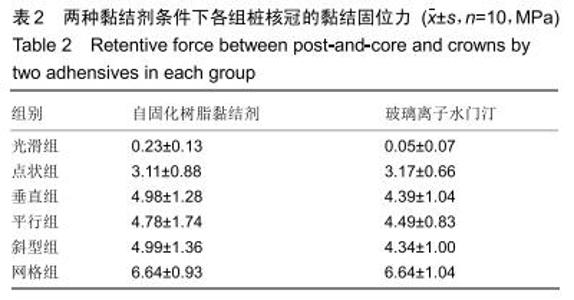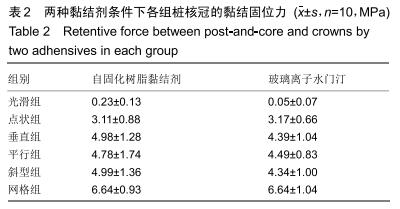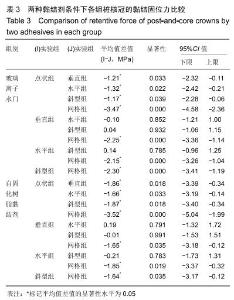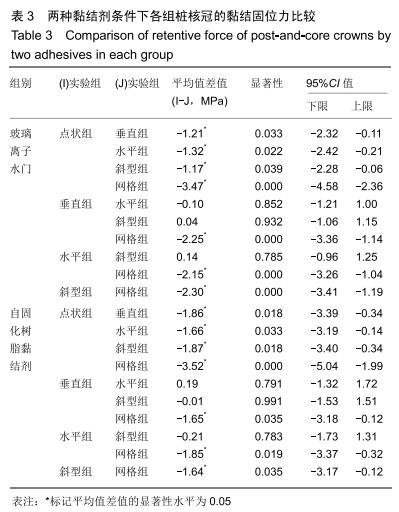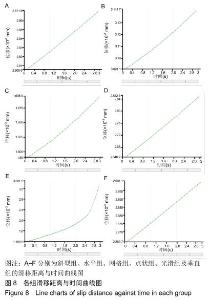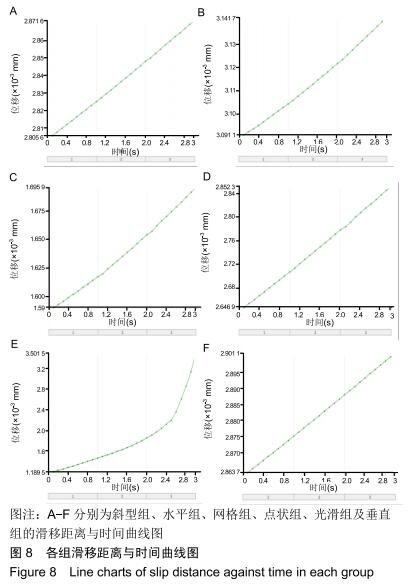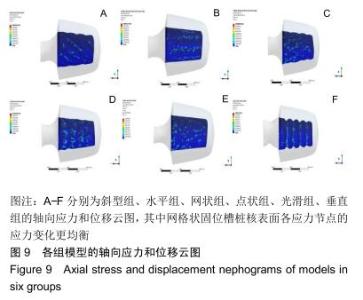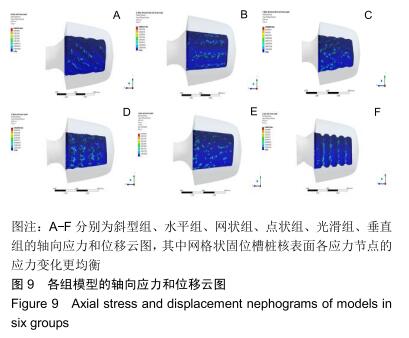|
[1] 吕红安.金属烤瓷修复体失败原因分析[J].中国现代药物应用, 2012,6(13):39-40.
[2] TSIAGALI V, KIRMANIDOU Y, PISSIOTIS A, et al. In Vitro Assessment of Retention and Resistance Failure Loads of Teeth Restored with a Complete Coverage Restoration and Different Core Materials.J Prosthodont. 2019;28(1):e229-e236.
[3] 赵铱民.口腔修复学[M].7版.北京:人民卫生出版社,2012.
[4] 白保晶,曹文,张振庭.存留壁和髓室底厚度对磨牙桩冠修复的应力分析[J].口腔颌面修复学杂志,2010,11(2):81-83.
[5] 胡妍,王冬梅,王成焘,等.四单位种植固定桥不同设计方案的生物力学研究[J].上海交通大学学报,2009,43(7):1056-1061.
[6] GOMES GM, GOMES OM, GOMES JC, et al. Evaluation of different restorative techniques for filling flared root canals: fracture resistance and bond strength aft er mechanical fatigue. J Adhes Dent.2014;16(3):267-276.
[7] 姚玲玲,黄琛琛,张艳梅,等.三种制作上颌前牙铸造桩核方法的临床效果比较[J].科技信息,2011(1):406-407.
[8] 吴倩,张彬,李楠,等.三维有限元分析在口腔医学领域的应用及研究进展[J].世界最新医学信息文摘,2019,19(20):95-99.
[9] 陈济芬,丁宏.不同制作和黏结方法对铸造金属桩核固位性影响的研究[J].口腔医学研究2016,32(4):408-411.
[10] 王维嘉,龙刚,胡嘉伟,等.钴铬合金和钛基台与全瓷冠间黏结界面的三维有限元元应力分析[J].国际口腔医学杂志, 2011,38(1): 10-13.
[11] 杨丽媛,刘翠玲,郑政,等.辅助固位形对低矮磨牙全冠修复体固位力和边缘适合性的影响[J].华西口腔医学杂志, 2015,33(5): 474-477.
[12] 钟小君.两种桩核冠修复下颌前磨牙的抗折力研究[J].广东牙病防治,2008,16(z1):606-608.
[13] 刘玉华,尹亚梅.桩核修复体组织面设计的有限元分析[J].中华口腔医学杂志,1996,31(3):156-158.
[14] 皮昕主编.口腔解剖生理学[M].4版.人民卫生出版社,2000.
[15] 东罗春,施长信,纪伟明,等.牙脱位的力学实验研究[J].现代口腔医学杂志,1992,6(3):134-136.
[16] 周敏,郭庆泰,安钢,等.3种黏固剂及牙体预备时机对铸造桩核固位力的影响[J].上海口腔医学,2009,18(6):643-646
[17] 聂二民,鲁洁.牙体剩余量对纤维桩核全冠修复体折裂模式的影响[J].中国组织工程研究,2015,19(43):6971-6976.
[18] 张富强.圆锥形套筒冠义齿[M].上海:上海科学技术文献出版社, 2002.
|
